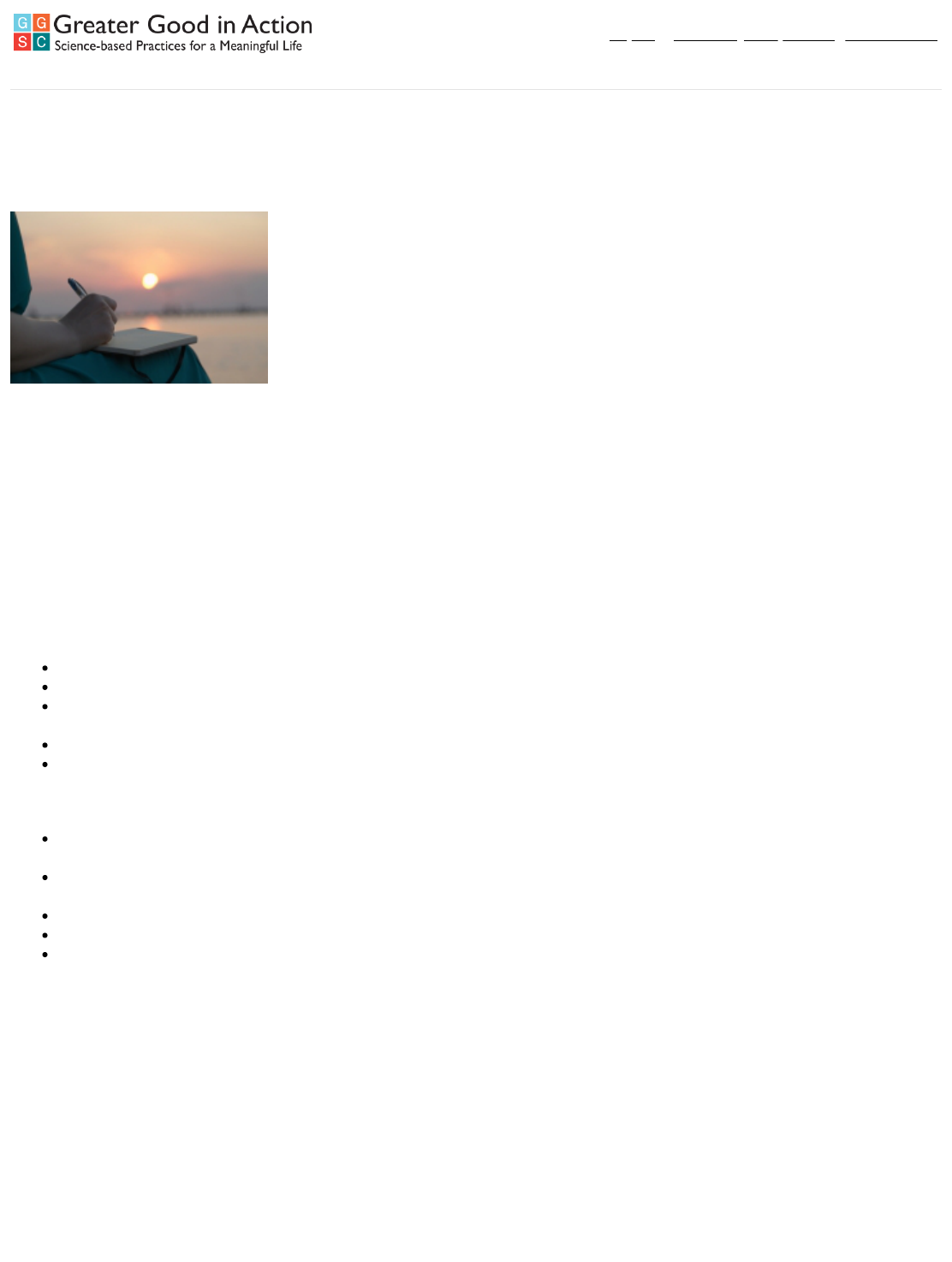
https://ggia.berkeley.edu/practice/gratitude_letter
GRATITUDE LETTER
Difficulty: MODERATE | Frequency: VARIABLE | Duration: 30 MINS
WHY YOU SHOULD TRY IT
Feeling gratitude can improve health and happiness; expressing gratitude also
strengthens relationships. Yet sometimes expressions of thanks can be fleeting and
superficial. This exercise encourages you to express gratitude in a thoughtful, deliberate
way by writing—and, ideally, delivering—a letter of gratitude to a person you have never
properly thanked.
TIME REQUIRED
At least 15 minutes for writing the letter and at least 30 minutes for the visit
HOW TO DO IT
Call to mind someone who did something for you for which you are extremely grateful but to whom you never expressed your
deep gratitude. This could be a relative, friend, teacher, or colleague. Try to pick someone who is still alive and could meet you
face-to-face in the next week. It may be most helpful to select a person or act that you haven’t thought about for a while—
something that isn’t always on your mind.
Now, write a letter to one of these people, guided by the following steps.
Write as though you are addressing this person directly (“Dear ______”).
Don’t worry about perfect grammar or spelling.
Describe in specific terms what this person did, why you are grateful to this person, and how this person’s behavior
affected your life. Try to be as concrete as possible.
Describe what you are doing in your life now and how you often remember his or her efforts.
Try to keep your letter to roughly one page (~300 words).
Next, you should try if at all possible to deliver your letter in person, following these steps:
Plan a visit with the recipient. Let that person know you’d like to see him or her and have something special to share,
but don’t reveal the exact purpose of the meeting.
When you meet, let the person know that you are grateful to them and would like to read a letter expressing your
gratitude; ask that he or she refrain from interrupting until you’re done.
Take your time reading the letter. While you read, pay attention to his or her reaction as well as your own.
After you have read the letter, be receptive to his or her reaction and discuss your feelings together.
Remember to givethe letter tothe person when you leave.
If physical distance keeps you from making a visit, you may choose to arrange a phone or video chat.
EVIDENCE IT THAT WORKS
Seligman, M. E., Steen, T. A., Park, N., & Peterson, C. (2005).Positive psychology progress: empirical validation of
interventions.American Psychologist, 60(5), 410.
When researchers tested five different exercises, the gratitude visit showed the greatest positive effect on participants’
happiness one month later; however, six months after the visit, their happiness had dropped back down to where it was
before. This is why some researchers suggest doing this exercise once every six weeks or so.
Also,2009 research led by Jeffrey Frohfound that adolescents who don’t generally experience positive emotions showed a
significant boost in positive emotions two months after doing a gratitude visit.

Research suggeststhat while there are benefits simply to writing the letter, you reap significantly greater benefits from
delivering and reading it in person.
WHY IT WORKS
The letter affirms positive things in your life and reminds you how others have cared for you—life seems less bleak and lonely
if someone has taken such a supportive interest in us. Visiting the giver allows you to strengthen your connection with them
and remember how others value you as an individual.
SOURCES
Sonja Lyubomirsky, Ph.D., University of California, Riverside
Kristin Layous, Ph.D., California State University, East Bay
Martin Seligman, Ph.D., University of Pennsylvania
This practice is part of Greater Good in Action, a clearinghouse of the best research-tested methods for increasing happiness, resilience, kindness, and connection, created by the
Greater Good Science Center at UC Berkeley and HopeLab.
